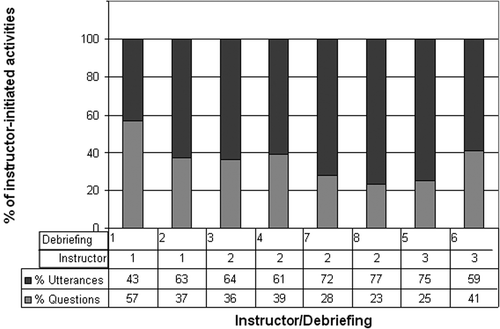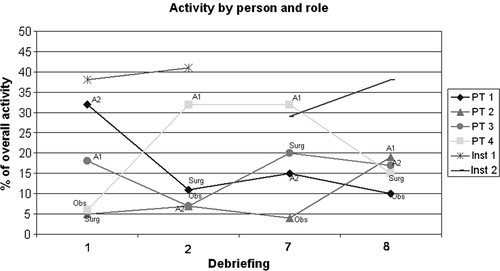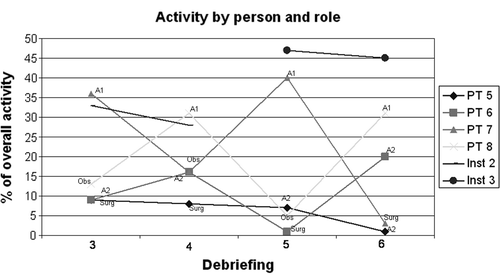Figures & data
Figure 1. Coding scheme and interaction codes. The circles represent the persons (and roles) involved in the debriefing and the arrows represent directed interactions. On the right the two different variants of the coding system are presented. During coding, the directed connections were labelled with the corresponding code.

Figure 2. Netgraphs of the relevance of six roles of medical teachers (Harden & Crosby 2000) in the ideal debriefing, divided by course type. The midpoint of the net indicates 0, and the outer limit of each branch 10. The lines with triangles represent responses for medical courses and the lines with squares represent answers for CRM-related courses. Significant differences (p < 0.005) between medians are marked by an asterisk (*).
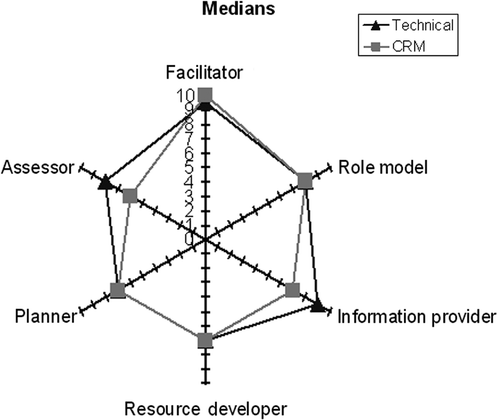
Figure 3. Boxplots for the variability of estimations about role relevance by course type (CRM-oriented in the upper part and medical in the lower part). Outliers are indicated for values that deviate more than 1.5 times of the interquartile range from either side of the box.
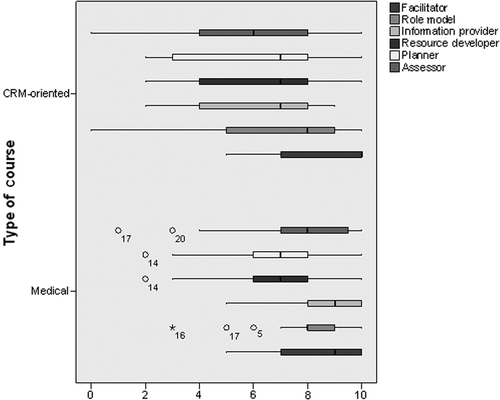
Figure 4. Overview of the different debriefing interaction patterns. Line (debriefing 2, 3 and 5), triangle (debriefing 1 and 6), fan (debriefing 8) and star (debriefing 4 and 7). Note the different legend for debriefing 1–5 and for 6–8 due to the different coding of the interactions. Note also the difference between the persons and the roles that they enacted in different scenarios.
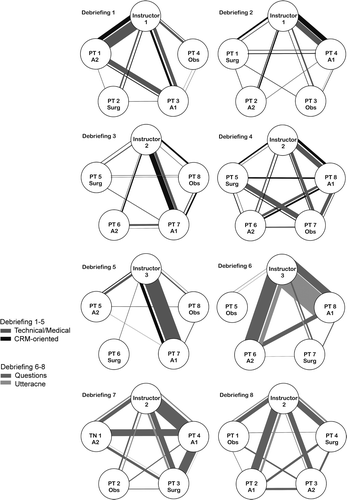
Figure 5. Distribution of question and utterances during debriefings (note that debriefings are sorted by instructor).
